As we grow older, maintaining mobility becomes crucial—not only for moving around but also for preserving independence and enhancing quality of life. Walkers offer seniors a reliable way to stay steady and move confidently, blending safety with freedom. This comprehensive guide covers the best walkers for seniors in 2025, different types, important features, and tips to select the perfect model whether you’re a senior or caregiver.
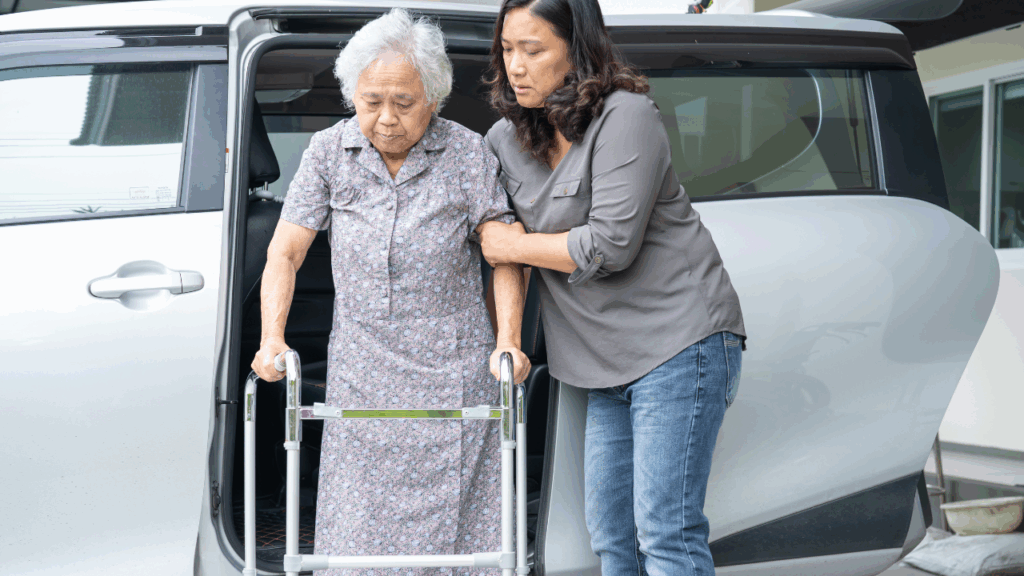
Why Walkers Are Vital for Senior Mobility and Safety
Walkers serve as essential mobility aids, helping seniors stay active while minimizing the risk of falls. With aging, changes like reduced muscle strength, balance challenges, and joint stiffness can make walking risky. Walkers provide extra support and stability, helping seniors maintain confidence and independence in daily life.
Key advantages include:
- Reducing fall risk
- Promoting self-sufficiency
- Supporting recovery after surgery or injury
- Increasing confidence during everyday tasks
Choosing the right walker can dramatically improve a senior’s comfort and security—so understanding options is key.
Common Types of Walkers and Their Uses
Choosing the right walker means understanding the various types available and how each caters to different mobility needs and lifestyles. Walkers come in multiple designs, each engineered to provide support, stability, and comfort tailored to the unique requirements of seniors. Let’s take a closer look at the most common walker types and explore their specific uses to help you find the perfect match.
1. Standard Walkers No Wheels
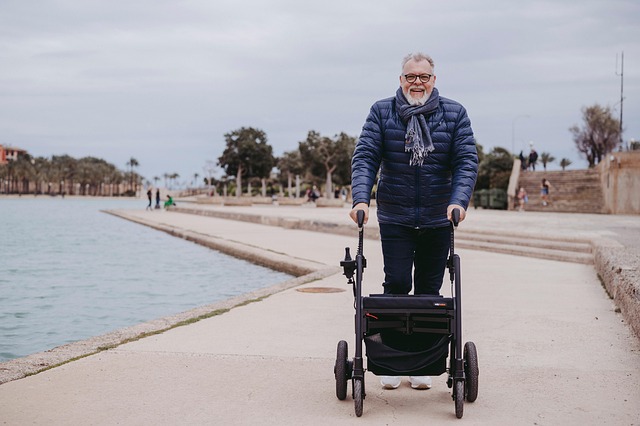
Standard walkers represent the classic and simplest form of walker, featuring four stable legs capped with rubber tips. Users lift this walker slightly with each step to reposition it ahead. Because it offers maximum contact with the ground, it provides unmatched stability and support.
Who Should Use It?
Ideal for seniors who require the utmost stability—particularly those with significant balance challenges or recovering from surgery or injury. It’s also a top choice for individuals who move slowly and need solid support for short indoor distances.
Best Use:
Perfect for home environments or places with smooth, flat flooring where maximum balance support is paramount. Because it requires upper body strength to lift the frame, it’s best suited for those with adequate arm and shoulder strength.
2. Two-Wheel Walkers : Front-Wheeled Walkers
Two-wheel walkers are a versatile step up from the standard walker, equipped with wheels on the front legs while maintaining stationary rubber tips on the rear. This design allows users to push the walker forward smoothly without lifting it completely.
Who Should Use It?
These walkers work well for seniors who desire a balance between support and mobility. They are ideal for those with moderate balance issues and enough upper body strength to control the walker but want easier navigation than a standard walker provides.
Best Use:
Great for indoor use on flat surfaces such as homes or rehabilitation centers. It’s especially beneficial for seniors transitioning from more restrictive mobility aids to greater independence.
3. Three-Wheel Walkers : Tri-Wheel Walkers
Three-wheel walkers feature a triangular frame with a single wheel upfront and two wheels at the back. This unique design allows for excellent maneuverability, particularly in tight spaces, making them lightweight and easy to steer.
Who Should Use It?
Perfect for more active seniors who have good balance but need extra support while moving about indoors or on smooth outdoor surfaces. They’re excellent for seniors living in apartments or assisted living facilities where space may be limited.
Best Use:
Ideal for light errands, indoor navigation, and trips to places like grocery stores or medical offices. Their compact size and portability make them suitable for seniors who need mobility aids that fit seamlessly into their lifestyle.
4. Rollators : Four-Wheel Walkers
Rollators are among the most advanced and feature-rich walkers. Equipped with four wheels, hand-operated brakes, built-in seats, backrests, and storage options, they provide a balance of support, safety, and convenience.
Who Should Use It?
Designed for active seniors who can walk longer distances but require assistance for stability and need the option to rest frequently. Rollators offer greater freedom and comfort, making them perfect for seniors who enjoy outdoor activities or social outings.
Best Use:
Rollators excel on varied terrains—from sidewalks and parks to indoor settings like malls. Their seating feature allows users to pause and rest as needed, which is a valuable asset during longer walks or outings.
5. Specialized Walkers
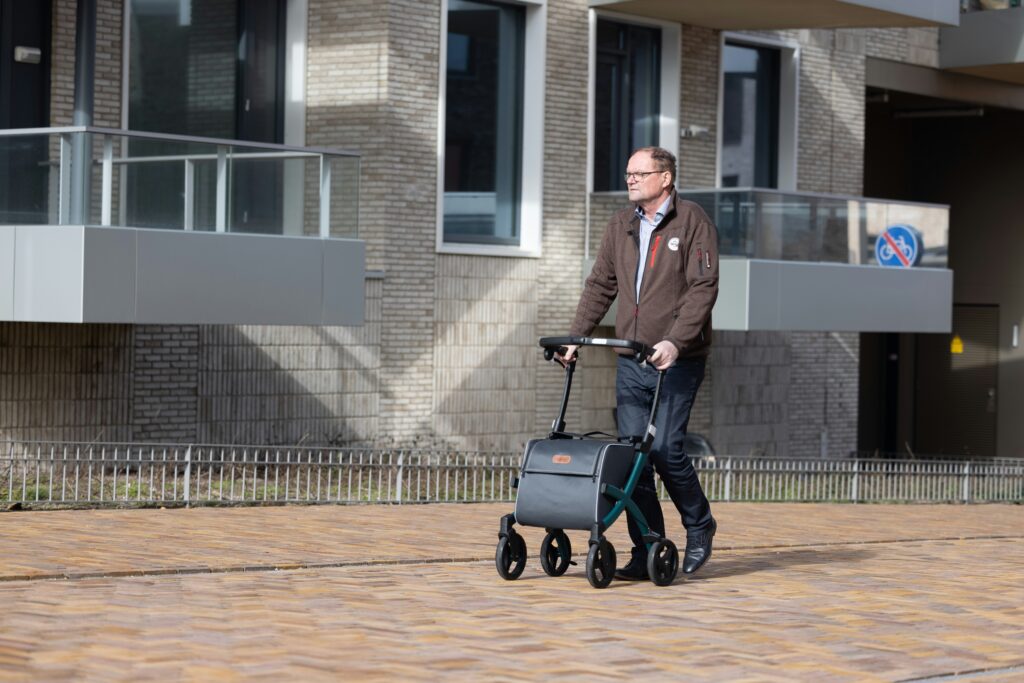
Beyond the common types, there are also specialized walkers designed for unique needs. These include bariatric walkers for heavier users, pediatric walkers for young individuals with mobility challenges, and walkers with added features like laser guidance or sensory feedback for neurological conditions.
Who Should Use It?
Seniors with specific medical conditions, weight considerations, or unique mobility challenges can benefit from these customized options.
Best Use:
Tailored to individual needs, these walkers provide specialized support whether for rehabilitation, weight management, or neurological assistance.
Why Understanding Walker Types Matters
Selecting the appropriate walker type isn’t just about mobility—it’s about enhancing a senior’s confidence, safety, and quality of life. Knowing the distinctions among walker types empowers caregivers and seniors alike to make informed decisions that promote independence while reducing the risk of falls and injuries.
By matching a walker’s features to a senior’s health status, living environment, and daily activities, you ensure that the mobility aid not only supports movement but also integrates seamlessly into everyday life.
Common Types of Walkers and Their Uses
Choosing the right walker means understanding the various types available and how each caters to different mobility needs and lifestyles. Walkers come in multiple designs, each engineered to provide support, stability, and comfort tailored to the unique requirements of seniors. Let’s take a closer look at the most common walker types and explore their specific uses to help you find the perfect match.
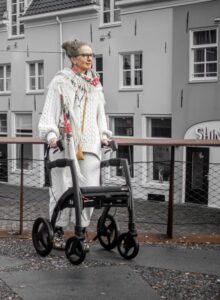
1. Standard Walkers : No Wheels:
Standard walkers represent the classic and simplest form of walker, featuring four stable legs capped with rubber tips. Users lift this walker slightly with each step to reposition it ahead. Because it offers maximum contact with the ground, it provides unmatched stability and support.
Who Should Use It?
Ideal for seniors who require the utmost stability—particularly those with significant balance challenges or recovering from surgery or injury. It’s also a top choice for individuals who move slowly and need solid support for short indoor distances.
Best Use:
Perfect for home environments or places with smooth, flat flooring where maximum balance support is paramount. Because it requires upper body strength to lift the frame, it’s best suited for those with adequate arm and shoulder strength.
2. Two-Wheel Walkers : Front-Wheeled Walkers
Two-wheel walkers are a versatile step up from the standard walker, equipped with wheels on the front legs while maintaining stationary rubber tips on the rear. This design allows users to push the walker forward smoothly without lifting it completely.
Who Should Use It?
These walkers work well for seniors who desire a balance between support and mobility. They are ideal for those with moderate balance issues and enough upper body strength to control the walker but want easier navigation than a standard walker provides.
Best Use:
Great for indoor use on flat surfaces such as homes or rehabilitation centers. It’s especially beneficial for seniors transitioning from more restrictive mobility aids to greater independence.
3. Three-Wheel Walkers : Tri-Wheel Walkers
Three-wheel walkers feature a triangular frame with a single wheel upfront and two wheels at the back. This unique design allows for excellent maneuverability, particularly in tight spaces, making them lightweight and easy to steer.
Who Should Use It?
Perfect for more active seniors who have good balance but need extra support while moving about indoors or on smooth outdoor surfaces. They’re excellent for seniors living in apartments or assisted living facilities where space may be limited.
Best Use:
Ideal for light errands, indoor navigation, and trips to places like grocery stores or medical offices. Their compact size and portability make them suitable for seniors who need mobility aids that fit seamlessly into their lifestyle.
4. Rollators : Four-Wheel Walkers
Rollators are among the most advanced and feature-rich walkers. Equipped with four wheels, hand-operated brakes, built-in seats, backrests, and storage options, they provide a balance of support, safety, and convenience.
Who Should Use It?
Designed for active seniors who can walk longer distances but require assistance for stability and need the option to rest frequently. Rollators offer greater freedom and comfort, making them perfect for seniors who enjoy outdoor activities or social outings.
Best Use:
Rollators excel on varied terrains—from sidewalks and parks to indoor settings like malls. Their seating feature allows users to pause and rest as needed, which is a valuable asset during longer walks or outings.
5. Specialized Walkers
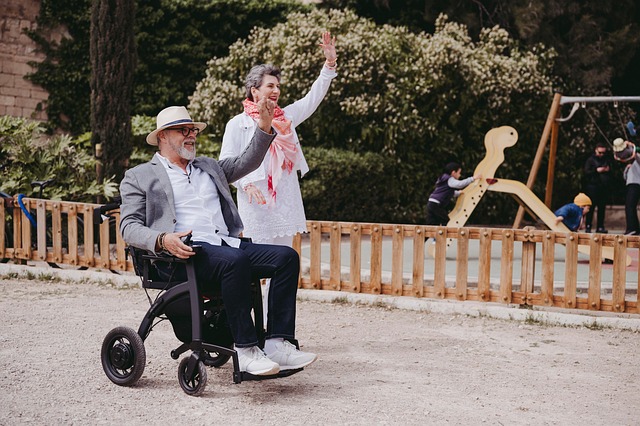
Beyond the common types, there are also specialized walkers designed for unique needs. These include bariatric walkers for heavier users, pediatric walkers for young individuals with mobility challenges, and walkers with added features like laser guidance or sensory feedback for neurological conditions.
Who Should Use It?
Seniors with specific medical conditions, weight considerations, or unique mobility challenges can benefit from these customized options.
Best Use:
Tailored to individual needs, these walkers provide specialized support whether for rehabilitation, weight management, or neurological assistance.
Why Understanding Walker Types Matters
Selecting the appropriate walker type isn’t just about mobility—it’s about enhancing a senior’s confidence, safety, and quality of life. Knowing the distinctions among walker types empowers caregivers and seniors alike to make informed decisions that promote independence while reducing the risk of falls and injuries.
By matching a walker’s features to a senior’s health status, living environment, and daily activities, you ensure that the mobility aid not only supports movement but also integrates seamlessly into everyday life.
Quick Overview: Walker Types at a Glance
Type | Stability | Maneuverability | Portability | Best For |
Standard Walker | High | Low | High | Maximum support at home |
Two-Wheel Walker | Moderate | Moderate | High | Recovery, indoor use |
Three-Wheel Walker | Moderate | High | Very High | Tight spaces, light errands |
Rollator | Moderate | High | Moderate | Active seniors, outdoor |
What to Look for When Buying a WalkerWhat to Look for When Buying a Walker
Finding the right walker is more than just selecting a mobility aid—it’s about enhancing safety, promoting independence, and improving quality of life. Whether for temporary rehabilitation or long-term daily use, choosing a walker involves considering key features that influence comfort, stability, and functionality.
1. Foldability
A walker that folds smoothly is essential for individuals with limited living space or those who frequently travel. Foldable designs are easier to store, transport, and maneuver, making them a top choice for both seniors and caregivers.
2. Braking System
For walkers equipped with wheels, a reliable braking system is critical. Brakes provide added safety, particularly on slopes, uneven surfaces, or when transitioning from standing to sitting. Look for walkers with easy-to-use, responsive hand brakes.
3. Weight Capacity
Always choose a walker with a weight capacity that comfortably exceeds the user’s body weight. This ensures long-term durability, safe usage, and peace of mind during daily movement.
4. Adjustable Height
A walker should accommodate the user’s height for optimal posture and ergonomic comfort. Adjustable handles help prevent slouching, reduce strain on shoulders and wrists, and encourage natural walking patterns.
5. Frame Material
Material choice directly affects the walker’s weight, durability, and ease of use.
- Aluminum frames are lightweight, rust-resistant, and easy to handle.
- Steel frames offer extra strength and stability but are typically heavier.
Choose based on the user’s strength and mobility level.
6. Comfortable Hand Grips
Ergonomically designed grips reduce hand fatigue and are especially important for users with arthritis or joint pain. Padded or molded hand grips improve comfort during extended use and provide better control.
7. Wheel Size and Maneuverability
Wheel size determines how well the walker navigates different environments:
- Larger wheels (8″ or more) are better for outdoor use and uneven terrain.
- Smaller wheels are ideal for indoor settings, offering tight turning and control in narrow spaces.
8. Accessory Options
Modern walkers often include or support optional accessories that enhance convenience:
- Storage baskets for personal items
- Trays for carrying food or medication
- Built-in seats for rest
- Cane holders or cup holders for added versatility
Select accessories based on the user’s daily habits and needs.
Matching the Right Walker to the User’s Lifestyle
Choosing a walker isn’t one-size-fits-all. It should reflect the user’s age, physical condition, daily routine, and living environment.
Age and Activity Level
- Younger or more active seniors may prefer lightweight, foldable walkers with sleek designs for agility.
- Older individuals or those who tire easily benefit from walkers with built-in seats and strong frames that offer greater stability.
Health Conditions
Medical conditions like arthritis, balance disorders, stroke recovery, or post-surgery rehab impact walker selection. Look for models with features like cushioned grips, forearm support, or advanced braking systems tailored to the user’s condition.
Lifestyle and Environment
- Indoor users need compact walkers with smooth gliding capabilities.
- Outdoor walkers should be durable, weather-resistant, and able to handle varied terrain.
Proper Fit and Size
A walker must suit the user’s body type and physical strength. An oversized or undersized walker can cause discomfort, tripping hazards, or even injury. Ensure the handle height, width, and weight match the user’s build.
Caregiver Considerations
If a caregiver will frequently assist, the walker should be lightweight and easy to fold or load into a vehicle. Portability improves the caregiving experience and reduces strain during transport.
Final Thoughts
A well-chosen walker can make a world of difference in a senior’s life—offering freedom, boosting confidence, and preventing falls. The best walker isn’t necessarily the most expensive—it’s the one that fits the user’s physical needs, lifestyle preferences, and environment. For additional safety, many seniors also benefit from free life alert systems designed especially for seniors, which provide extra peace of mind. With thoughtful selection and the right safety tools, seniors can enjoy greater mobility, independence, and comfort in 2025 and beyond..


